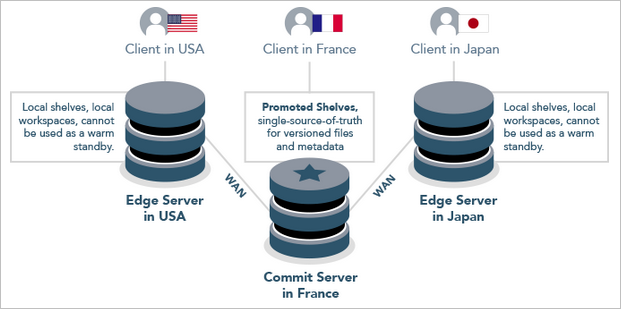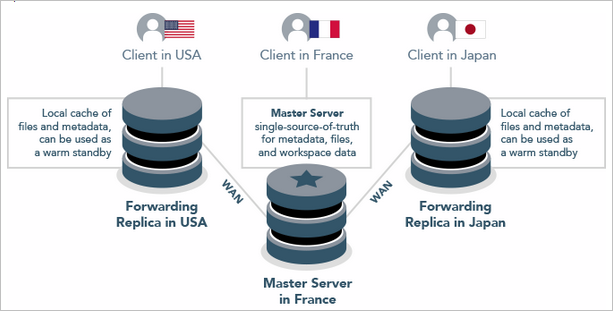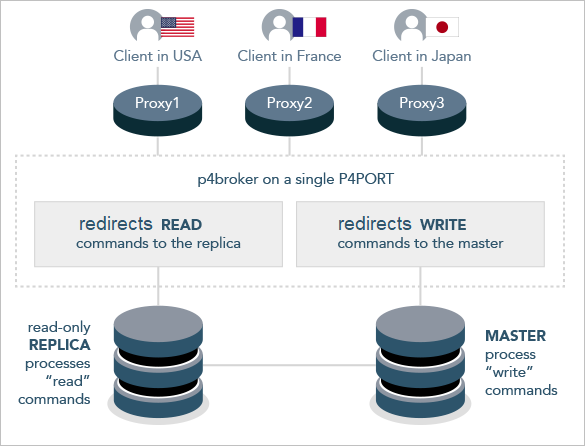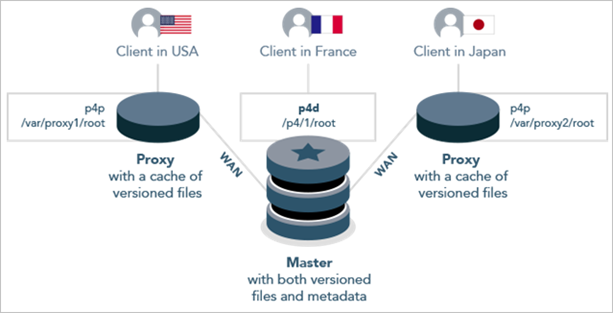Introduction to multi-site deployment architectures
Helix Core Server Administrator Guide: Fundamentals explains how you create, configure, and maintain a single Helix Core server. Small organizations often find a single server is adequate to meet user needs. However, as the business grows and usage expands in scale and geography, many organizations deploy a more powerful server-side infrastructure.
Distributed architectures
| Architecture | Advantage | Disadvantage |
|---|---|---|
|
|
|
|
|
Note
A master is a standard server type that doesn't support edge servers. |
|
Tip
Starting with 2018.2, we recommend a standby server with rpl.journalcopy.location=1 for high availability and disaster recovery. |

|
|
|
|
|
Tip
Note that during the Failover process, such a message is visible to the end-users without using a broker. |
|
|
|
|
Tip
|
Services assignment
To assign a service to a server, the administrator uses the Services: field that appears with the p4 server command:
For additional details, see:
- How replica types handle requests
- the Support Knowledgebase article, "Replica Types and Use Cases"
Your search for returned result(s).










